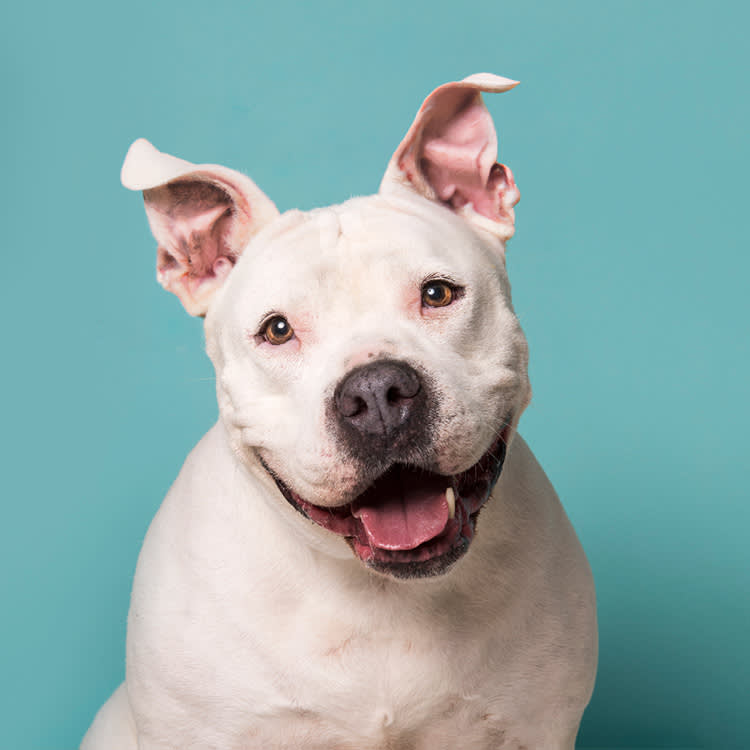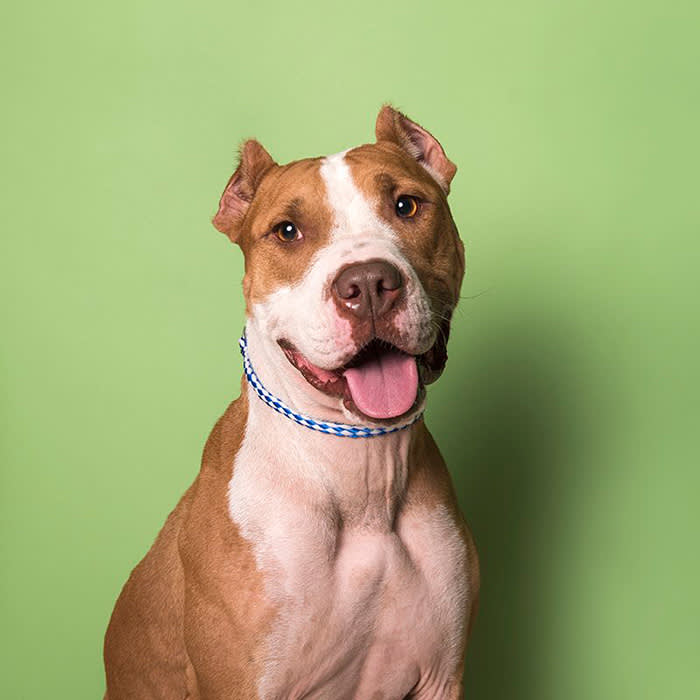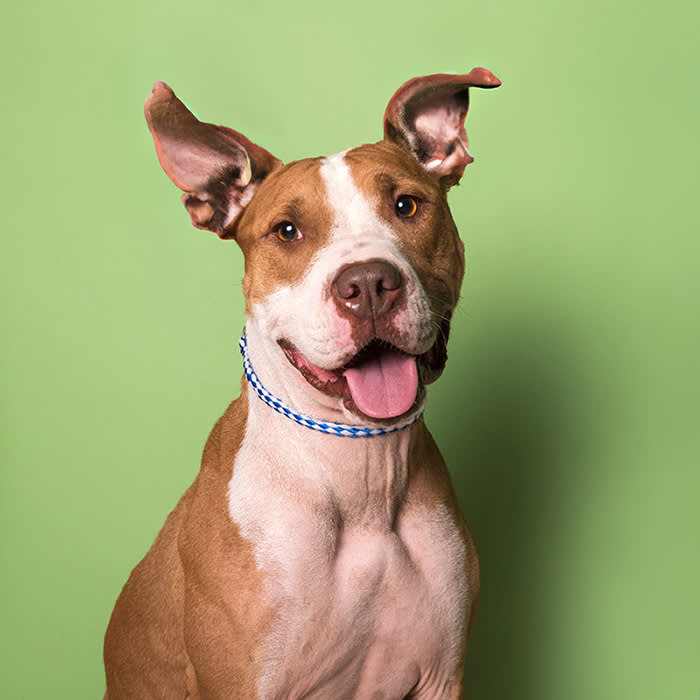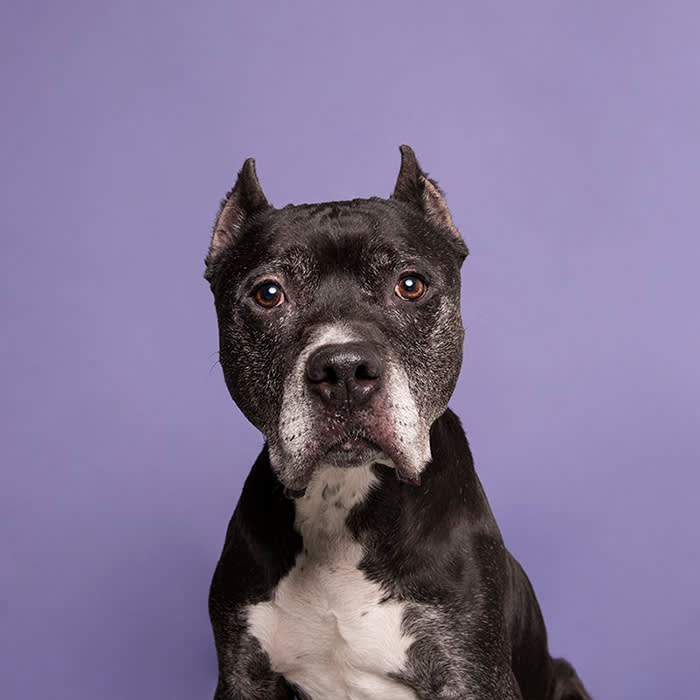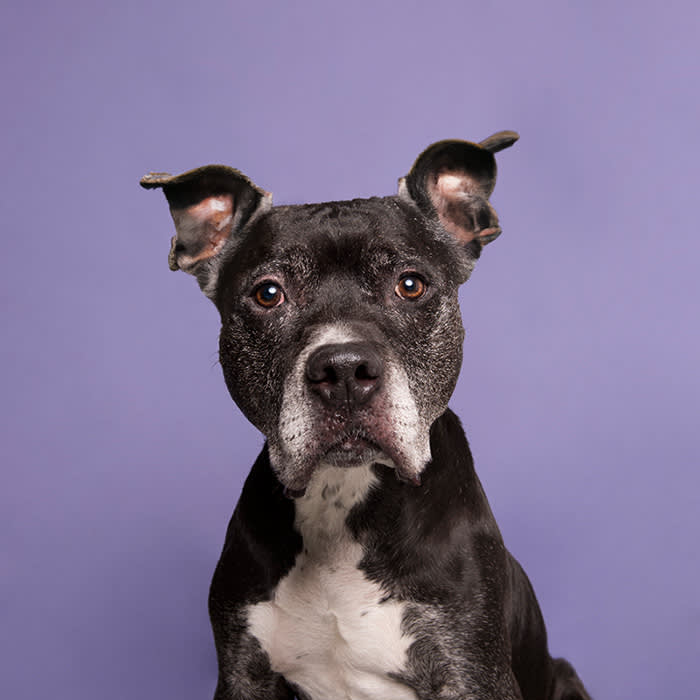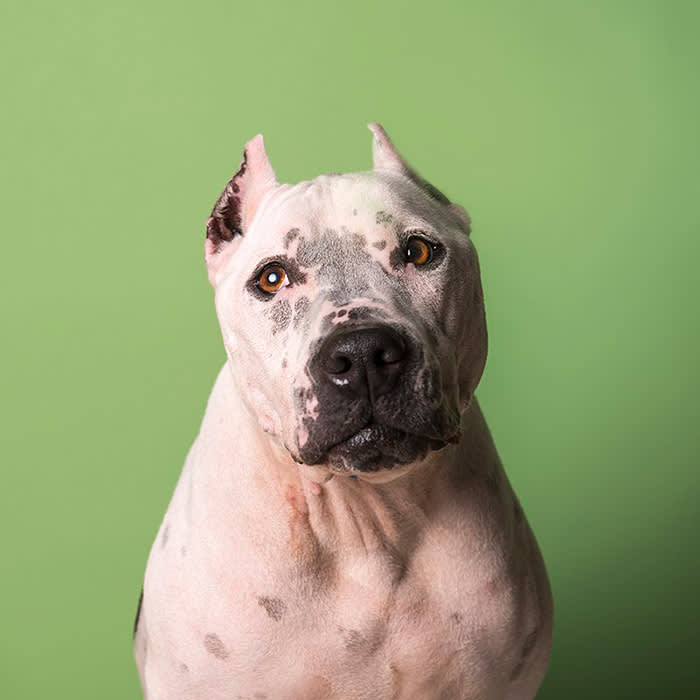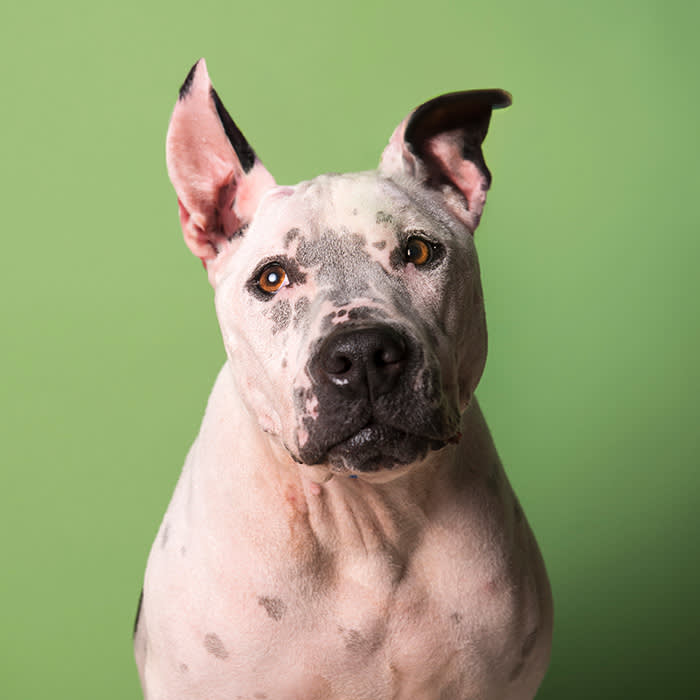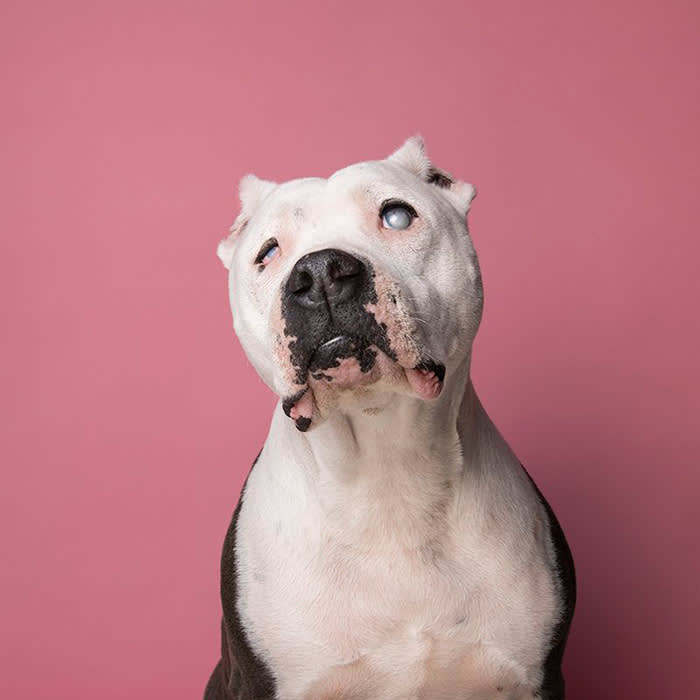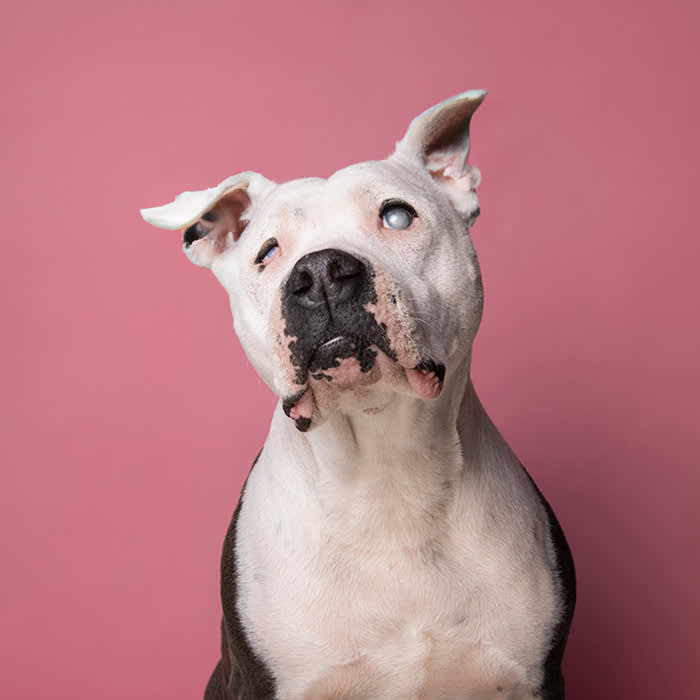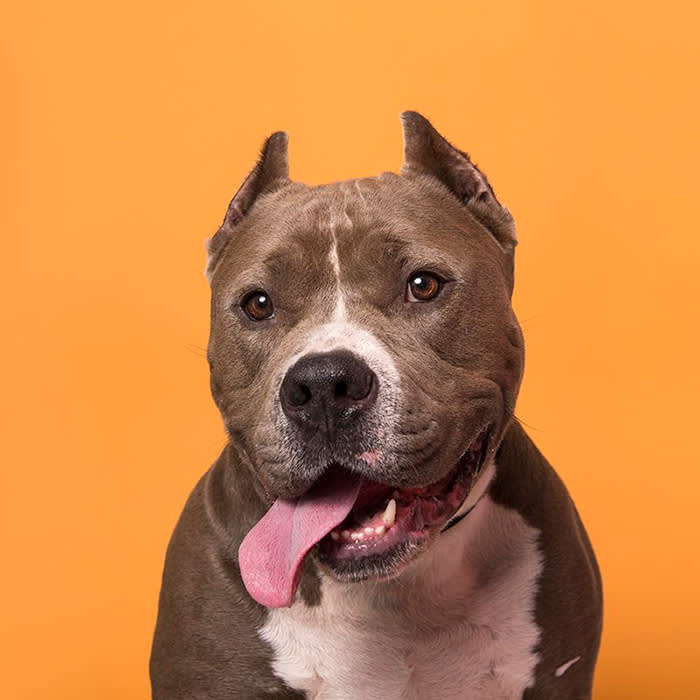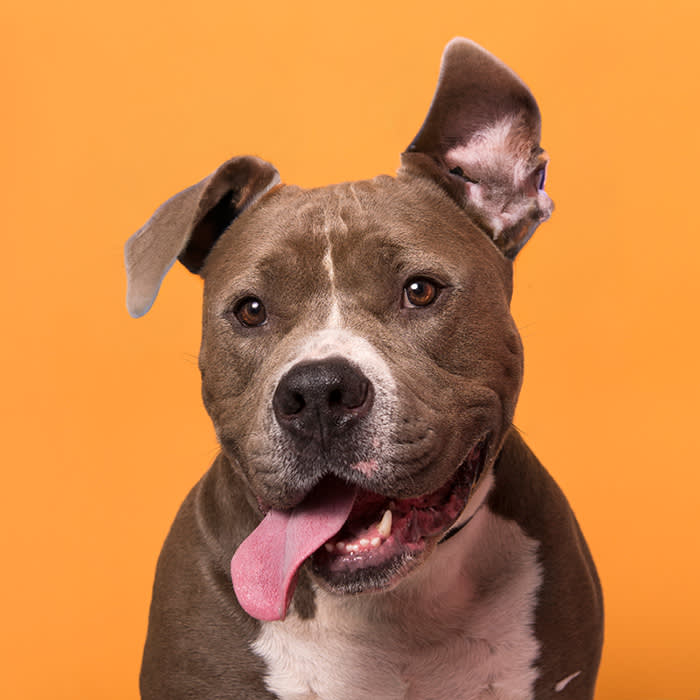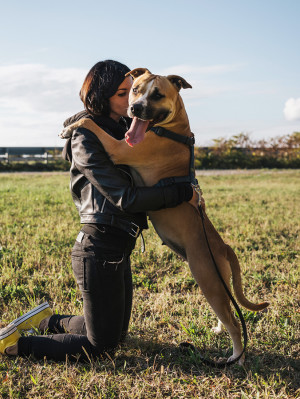Why I Used AI to Reconstruct Cropped Dog Ears
Vets everywhere agree that ear cropping is an unnecessary procedure that can lead to health problems. See how I gave these pups their ears back.
All the dogs featured in these photographs are shelter dogs who came to the shelter with their ears cropped. It is unknown what motivated the dogs’ parents to crop their pups’ ears in the first place, but using DALL·E 2, I prompted Artificial Intelligence to rebuild some of my models’ ears.
What is ear cropping?
Ear cropping is the cutting of the external flaps of dogs’ ears. It is done during puppyhood at about eight to 12 weeks old, while the ear cartilage is not fully developed, and it’s normally performed under anesthesia by licensed veterinarians. It is not uncommon for people to crop their dog’s ears at home themselves, sometimes not using professional tools or anesthetics. In 2020, Amazon was still selling “bully breed at-home ear cropping kits” until a petitionopens in new tab pressured them to remove the kits from their listings.
Trick question: All dogs are perfect! But find out which type is the best fit for you.
Why do people crop their dogs’ ears?
Ear cropping is often done on so-called guarding breeds, purely for looks. The idea is to give a menacing “erect” look to the dog. It is rooted in traditions of blood sports, such as bull-baiting and bear-baiting. There are various types of crops: the long crop, the show crop, the short crop, and the shortest one, called the “battle crop,” where the ears are cropped very close to the skull, which can lead to serious health issues. The battle crop is routinely seen on dogs who end up in rescue. The ear canals are exposed to the elements and debris, and these dogs may suffer ear infections because of this.
What do veterinarians think of ear cropping?
Unless done for rare medical reasons, veterinarians around the world agree that ear cropping is a cruel and unnecessary procedure, done for cosmetic reasons and which can lead to short and long-term problems for the dog. An increasing number of vets are now refusing to perform the procedure when it is not medically justified.
How much do you spend on your pet per year?
Ear cropping is banned in many countries where it is considered an act of cruelty — most of Europe, the U.K., Scandinavian countries, Australia, New Zealand, and parts of Canada have banned the procedure already. In North America, the practice is legal and still very common, despite organizations like the American Veterinary Medical Association (AVMA) clearly opposing it.
Per the AVMAopens in new tab, “Many veterinary organizations, in addition to the AVMA, oppose cosmetic cropping including the American Animal Hospital Association (AAHA), Canadian Veterinary Medical Association (CVMA) and Australian Veterinary Association. Individual veterinarians differ in their perspectives.” The AVMA conducted a literary review and found that “ear cropping is a cosmetic procedure with potential negative outcomes for the animal.”
What about breed standards?
In the United States, breeders and dog parents continue to cut off their puppies’ ears, sometimes following breed standards — but not always. For example, the Staffordshire Terrier’s or the Cane Corso’s breed standards do not call for cropped ears and leave the option up to the breeder. But the Doberman’s breed standards does call for cropped ears.
Breeders’ main argument is that some breeds have had their ears cropped for centuries or decades, so they must continue (“preserve”) the tradition/look. This, they claim, is particularly important for breeds viewed as working or guarding breeds. They fail to acknowledge that most dogs are not working dogs, but rather pets living safe, comfortable lives in their pet parent’s home. Same goes for tail docking.
Another surprising argument I have heard when speaking with breeders who crop their dogs’ ears is that the ancestors of the dog we know today had erect ears and that floppy ears are not natural and only happen through domestication. Therefore, cropping ears is akin to reverting to a more natural look for dogs. But there is a major difference: For dogs born with naturally erect ears, thick hair and/or natural barriers likely protect the ear canal. But for dogs born with floppy ears that are now removed surgically, the ear canal is exposed to rain, debris and other things. There is a major difference between slow, natural evolution, and hasty surgery/artificial selection.
The risks for the dog
Ear cropping, like any surgery, can go awfully wrong. Recovery can be particularly tricky and traumatic and can take months. The final shape of the ears is not guaranteed. The AVMA lists several types of medical/welfare risks for the procedure itself: “General anesthesia — cropping should always be carried out under full anesthesia, which itself has associated risks.
Postoperative care: Dogs will experience some discomfort during healing, stretching, re-taping and bandaging, and other manipulations after surgery. Some will need their ears bandaged or taped upright for days to months, and they may be isolated from other dogs during this period.
Potential complications: As for any incision, cropped ears may become infected. Cropped ears may also fail to stand or have a distorted shape or position potentially leading to subsequent operations.”
Beyond the surgery, dogs may suffer long-term effects. Even if the puppy recovers well from the gruesome surgery and postoperative care, they might still experience lifelong issues, some of which we might not be fully aware of. For all we know, it is possible dogs suffer from phantom pain as well. Some pet parents have noticed their dogs being more sensitive to the cold or the wind, for example. This isn’t a far-fetched idea, given that the tip of the ear is now a permanent, probably sensitive scar.
Maybe the cruelest aspect of ear cropping is that it robs dogs of one of their most important communication tools. Dogs need their ears — flaps included, if they are born with them — for a variety of reasons. The flaps help gather more information: moving their ears in the direction of a sound, using the 18 muscles dogs have in their ears, dogs capture more information and use their flaps to funnel sounds into the ear canal.
Dogs also use their ears and flaps to emote and communicate with other dogs and with humans. With their ears, dogs communicate whether they are nervous, alert, relaxed, reactive, enticed. It’s an important tool for them to express appeasement, for example. They will flatten their ears backward, tight against their head to signal to others that they wish to de-escalate a stressful situation, or tell the other guy, “Hey, I am a friend and want no trouble!” This motion is impossible if the ears are cropped, especially if they’ve been healed in an erect position. An erect ear might actually signal the wrong message to other dogs.
Dogs use their ears to signal to others what their feelings or intentions might be. Dogs today do not live like their ancestors did. Many dogs have intricate and complex social lives, meeting dogs during their walks and at the dog park, living in humans’ homes and having to contend with children, and more.
Robbing dogs of their ears as a communication tool could lead them to feel powerless, which could escalate behaviors, such as barking or mouthing, when their attempts at expressing themselves more peacefully and subtly are ignored.
References
A Study to Evaluate the Primary Causes Associated With Pseudomonas Otitis in 60 Dogsopens in new tab
AKC American Staffordshire Terrier Breed Traits & Characteristicsopens in new tab
AKC Cane Corso Breed Traits & Characteristics opens in new tab
AKC Doberman Pinscher Breed Traits & Characteristics opens in new tab
